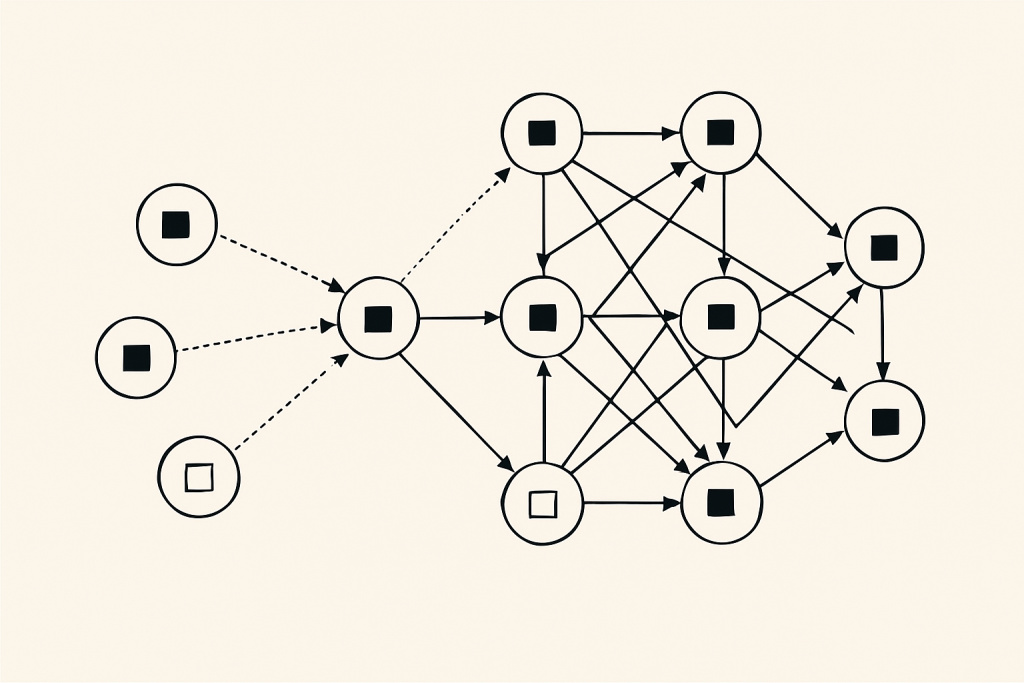
Imagine you’re trying to remember the name of a song. You don’t recall the whole thing—just a fragment of the melody or a single lyric. But somehow your brain fills in the rest, and the entire song suddenly pops into your mind. This everyday moment shows something powerful: even small bits of information can trigger complete memories. The document by Hopfield explains how elementary networks, made of many tiny “on/off” units, can behave in surprisingly brain-like ways and perform tasks like this without needing complicated programming.
Hopfield and colleagues describe how a network of simple neurons—each capable of switching only between “on” and “off”—can work together to store memories and retrieve them when given partial hints. For example, if the network had learned several patterns, showing it only part of one pattern could make the whole system automatically “flow” toward the full version. This happens because the system creates stable states, like resting spots, that it naturally falls into. It’s similar to how a marble dropped on a bumpy surface always ends up in one of the low dips. If your starting point is close enough to a dip, the system finishes the job for you and returns the full memory.
What’s especially interesting is that these networks can correct small mistakes, sort confusing inputs into categories, and even recognize when something is unfamiliar. For instance, if the system is shown a pattern that doesn’t match any of the stored memories, it settles into a special “unknown” state, acting almost like a built-in warning that the input doesn’t fit anything it has seen before. The document also shows that the network continues to function even if some of its connections fail or if many memories are stored simultaneously; its performance slowly degrades rather than collapsing suddenly. This “fail-soft” behavior is rare in ordinary computer circuits but everywhere in biological systems.
The most surprising part is how all these smart behaviors don’t come from any single neuron being clever. Instead, they arise from the collective behavior of many simple units acting together. This idea matters beyond neuroscience. It suggests that powerful abilities—such as recognizing faces, learning patterns, or making quick decisions—can emerge from surprisingly simple parts working in parallel. For young people learning about technology and the brain, this demonstrates that intelligence doesn’t always require complexity at the most fundamental level. Sometimes, it’s the connections, the cooperation, and the way the whole system behaves that create something much more potent than the pieces alone.
Reference:
Hopfield, J. J. (1982). Neural networks and physical systems with emergent collective computational abilities. Proceedings of the National Academy of Sciences, 79(8), 2554–2558. https://doi.org/10.1073/pnas.79.8.2554
Privacy Notice & Disclaimer:
This blog provides simplified educational science content, created with the assistance of both humans and AI. It may omit technical details, is provided “as is,” and does not collect personal data beyond basic anonymous analytics. For full details, please see our Privacy Notice and Disclaimer. Read About This Blog & Attribution Note for AI-Generated Content to know more about this blog project.